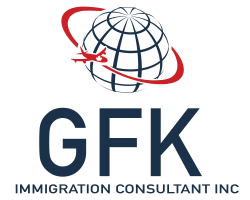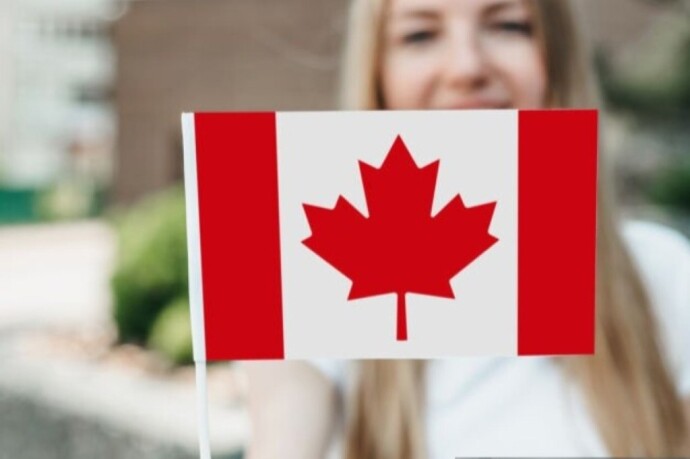
Carneys 2025 Canada Immigration Plan
Following their victory in the 2025 federal election, the Liberals of Canada, led by Mark Carney, are set to steer the nation’s immigration policy in a new direction.
The Liberals will form a minority government; their platform and campaign promises offer a clear glimpse into their plans for Canada’s immigration system.
From stabilizing permanent resident admissions to reducing temporary resident levels, this article explores the Liberals’ vision for immigration, including their focus on francophone communities, economic growth, and border security.
Table of Contents
A New Era for Canada’s Immigration System
The Liberal Party’s 2025 election win marks a pivotal moment for Canada’s immigration landscape.
With Mark Carney to continue as the Prime Minister of Canada after his brief takeover from Justin Trudeau, the Liberals are poised to implement policies that address the challenges of recent years while maintaining Canada’s reputation as a welcoming nation.
Their platform emphasizes a balanced approach, focusing on sustainability, economic growth, and cultural diversity.
During the campaign, Carney highlighted the need to “get back on track” after what the Liberals described as an “unsustainable” surge in immigration under the previous government.
This surge, particularly during and after the COVID-19 pandemic, placed significant pressure on housing, healthcare, and social services.
The Liberals’ plan aims to address these issues while ensuring that immigration continues to benefit Canada’s economy and society.
Stabilizing Annual Immigration Targets
One of the cornerstones of the Liberal Party’s immigration policy is the commitment to stabilize permanent resident (PR) admissions at less than 1% of Canada’s population annually beyond 2027.
This approach aligns with the current Immigration Levels Plan for 2025-2027, which sets PR targets at 395,000 in 2025, 380,000 in 2026, and 365,000 in 2027.
Given Canada’s estimated population of 41.5 million in 2025, these targets already fall below the 1% threshold, indicating that the Liberals plan to maintain this trajectory.
This is good news for the permanent residency applicants since Conservatives were vying to reduce the targets to 250,000.
This policy reflects a shift from earlier years when the Liberal government, under Justin Trudeau, aimed to admit 500,000 permanent residents annually by 2025.
The reduction in targets, first announced in October 2024 by then-Immigration Minister Marc Miller, was a response to growing concerns about infrastructure capacity and housing shortages.
The Liberals under Carney intend to continue this cautious approach, ensuring that immigration levels do not outpace Canada’s ability to provide adequate housing, healthcare, and jobs for newcomers.
For potential immigrants, this means a more predictable and manageable pathway to permanent residency, with a focus on integrating those already in Canada.
The Liberals’ emphasis on stability aims to create a system that benefits both newcomers and long-term residents by reducing strain on public services.
Reducing Temporary Resident Levels to Sustainable Numbers
Canada’s temporary resident population has been a significant point of discussion in recent years.
As of January 2025, an estimated 3.02 million temporary residents—comprising international students, temporary foreign workers, and others—made up approximately 7.25% of Canada’s total population of 41.5 million.
The Liberal Party has pledged to reduce this proportion to less than 5% by the end of 2027, a goal they describe as returning to “sustainable levels.”
To achieve this, the Liberals plan to facilitate the transition of temporary residents to permanent residency while also allowing some to leave as their permits expire.
This strategy builds on measures introduced by the previous Liberal government, which included capping study permit applications, tightening eligibility for Post-Graduation Work Permits (PGWPs), and restricting Spousal Open Work Permits (SOWPs).
These policies were designed to manage the rapid growth of temporary residents, which had surged during the post-pandemic recovery to address labour market shortages.
Mark Carney emphasized the need for these caps during a campaign stop, stating, “Immigration caps will remain in place until we’ve expanded housing and reabsorbed the levels of immigration that have happened in our country [during the pandemic].”
This approach reflects a broader commitment to aligning immigration levels with Canada’s infrastructure capacity, ensuring that newcomers can integrate successfully without overwhelming public resources.
For international students and temporary workers, this policy may mean a more competitive environment for securing permanent residency.
However, it also offers a clearer pathway for those already in Canada, as the Liberals prioritize transitioning temporary residents to PR status.
The 2025-2027 Immigration Levels Plan, for instance, allocates 82,980 PR spots in 2025 to individuals already in Canada, representing 36% of the economic immigration target.
Boosting Francophone Immigration Outside Quebec
The Liberal Party has made a significant commitment to supporting francophone communities outside Quebec by increasing the target for francophone immigration to 12% by 2029.
This represents a notable increase from the current federal targets, which are set at 8.5% in 2025, 9.5% in 2026, and 10% in 2027, as outlined in the latest Immigration Levels Plan.
This policy aims to strengthen French-speaking communities in regions like New Brunswick, Ontario, and Manitoba, where francophone populations play a vital role in cultural and economic life.
By prioritizing francophone immigration, the Liberals seek to address demographic challenges in these minority communities, such as aging populations and labor shortages, while promoting linguistic diversity across Canada.
For francophone immigrants, this initiative offers greater opportunities to settle in Canada outside Quebec, with targeted support for integration into French-speaking communities.
Programs like the Francophone Community Immigration Pilot, which targets francophone minority communities, will likely see increased funding and attention under the Liberals’ plan.
Strengthening Economic Immigration for Growth
Economic immigration remains a priority for the Liberal Party, with a focus on attracting top global talent to support Canada’s economic growth.
The party’s platform includes plans to revamp the Global Skills Strategy, a federal program that facilitates the hiring of skilled workers from around the world by offering priority work permit processing within two weeks.
The Liberals aim to enhance this program by introducing new initiatives to help high-growth Canadian businesses and entrepreneurs attract talent, with a particular emphasis on drawing skilled workers from the United States.
Additionally, the Liberals have pledged to work with provinces and territories to streamline the recognition of foreign credentials and international professional experience.
This is particularly significant for sectors like healthcare and trades, where labour shortages have been a persistent challenge.
By simplifying credential recognition, the Liberals hope to enable skilled immigrants to contribute to the Canadian economy more quickly, addressing critical gaps in the labour market.
The 2025-2027 Immigration Levels Plan underscores this focus on economic immigration, with the economic category projected to account for nearly 62% of total PR admissions by 2027.
Programs like Express Entry, the Provincial Nominee Program (PNP), and the Canadian Experience Class (CEC) will continue to play a key role in attracting skilled workers who can contribute to Canada’s long-term prosperity.
For businesses and employers, this policy signals continued support for hiring international talent, particularly in high-demand sectors.
For immigrants with skills in areas like technology, healthcare, and trades, the Liberals’ plan offers a promising pathway to permanent residency and career opportunities in Canada.
Additional Promises: Efficiency, Security, and Fairness
Beyond their core immigration policies, the Liberal Party has outlined several other commitments to improve the immigration system:
Digital Tools for Efficiency: The Liberals plan to leverage digital service tools to reduce processing times and eliminate backlogs, making the immigration process faster and more efficient for applicants.
This could mean quicker decisions for those applying for work permits, study permits, or permanent residency.
Support for Asylum Seekers: The party has promised to provide legal aid for asylum seekers and refugees, ensuring they receive timely advice and representation.
This aims to resolve cases more quickly while maintaining fairness in the process.
Carney has also called for closer collaboration with the United States to manage the influx of asylum seekers crossing the border, a trend he attributes to U.S. migration policies under President Donald Trump.
Border Security and Enforcement: The Liberals plan to increase resources for border security, tighten visa requirements, and enhance enforcement against immigration fraud.
They also intend to remove failed claimants once due process has been completed, though it’s unclear how this differs from existing policies.
Collaboration with Quebec: The Liberals will continue to administer immigration as a shared responsibility with the government of Quebec, respecting the province’s authority over its immigration levels under the Canada-Quebec Accord.
This ensures that Quebec can maintain its distinct cultural and linguistic identity while benefiting from immigration.
These promises reflect the Liberals’ commitment to a well-managed immigration system that balances openness with security and efficiency.
For immigrants and refugees, these policies aim to create a fairer and more streamlined process, while also addressing public concerns about border security and system integrity.
The Context: Why These Changes Matter
The Liberals’ immigration policies come at a time when Canada is grappling with the consequences of rapid population growth.
Between 2021 and 2024, the country saw an unprecedented influx of newcomers, driven largely by temporary residents like international students and temporary foreign workers.
While this growth helped address labor shortages during the post-pandemic recovery, it also contributed to housing shortages, rising rental costs, and strain on public services like healthcare.
Public sentiment, as reflected in recent polls, has increasingly favored a more controlled approach to immigration.
A 2025 Angus Reid poll found that a majority of Canadians believe immigration targets should be reduced, citing concerns about affordability and service pressures.
The Liberals’ platform appears to respond to these concerns by prioritizing sustainability and integration, ensuring that Canada can support its newcomers without compromising the quality of life for residents.
At the same time, the Liberals remain committed to the economic and cultural benefits of immigration.
Canada’s aging population and low birth rate make immigration a critical driver of population growth and economic vitality.
By focusing on economic immigration and francophone communities, the Liberals aim to address labor market needs and promote diversity, while their caps on temporary residents seek to alleviate immediate pressures on infrastructure.
What This Means for Immigrants and Canadians
For potential immigrants, the Liberals’ policies offer both opportunities and challenges.
Those already in Canada as temporary residents, such as international students and workers, may benefit from the focus on transitioning to permanent residency.
However, new applicants for study permits or work permits may face stricter criteria and caps, making it more competitive to enter Canada.
For francophone immigrants, the increased target for francophone immigration outside Quebec opens up new possibilities to settle in French-speaking communities, with enhanced support for integration.
Skilled workers, particularly in high-demand sectors, will find opportunities through the revamped Global Skills Strategy and streamlined credential recognition processes.
For Canadians, the Liberals’ plan aims to address concerns about housing and public services by ensuring that immigration levels align with infrastructure capacity.
The reduction in temporary resident levels and the focus on sustainable growth are intended to ease pressure on resources, while the emphasis on economic immigration supports long-term economic prosperity.
Challenges and Opportunities
As Mark Carney prepares to take office, the success of the Liberals’ immigration policies will depend on their ability to balance competing priorities.
Reducing temporary resident levels while maintaining economic growth will require careful coordination with provinces, businesses, and educational institutions.
Expanding housing and infrastructure, as Carney has promised, will be critical to ensuring that Canada can support its newcomers effectively.
The Liberals’ focus on francophone immigration and economic talent also presents opportunities to strengthen Canada’s cultural diversity and global competitiveness.
By attracting skilled workers and supporting minority communities, the Liberals aim to build a more inclusive and prosperous nation.
However, challenges remain.
The proposed caps on immigration, while popular with some Canadians, have raised concerns among advocacy groups who argue that they could limit opportunities for vulnerable populations, such as refugees and family reunification applicants.
Additionally, the emphasis on transitioning temporary residents to permanent status may lead to increased competition for PR spots, potentially affecting processing times and backlogs.
A Balanced Vision for Canada’s Future
The Liberal Party’s 2025 immigration plan, under the leadership of Mark Carney, reflects a commitment to sustainability, economic growth, and cultural diversity.
As the new government takes shape, the nation will be watching to see how these policies unfold and what they mean for Canada’s future as a global leader in immigration.
Who is the prime minister of Canada in 2025?
Mark Carney is the 24th prime minister of Canada.
Who won the Canada election?
The Liberal Party of Canada won the Canada election.
Contact us today to explore the possibilities.
GFK Immigration
Gboyega Esan RCIC R708591
Phone: +1 (647) 225-0092
#studyincanada #studyabroad #canada #studyinuk #studyinaustralia #ielts #studentvisa #studyinusa #studyvisa #immigration #canadavisa #visa #education #internationalstudents #overseaseducation #study #canadaimmigration #highereducation #studyoversea



